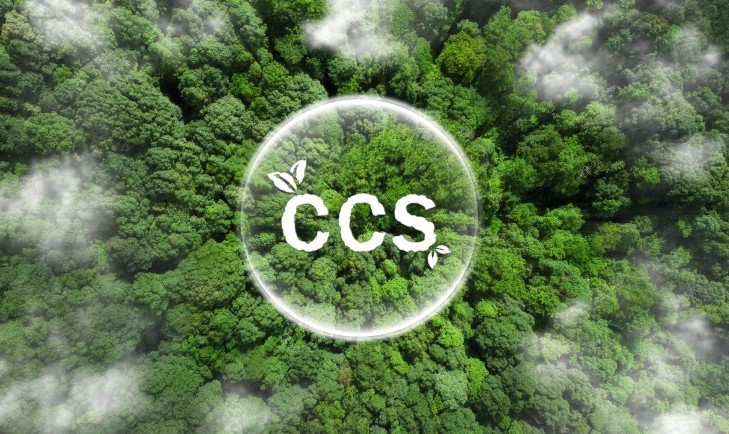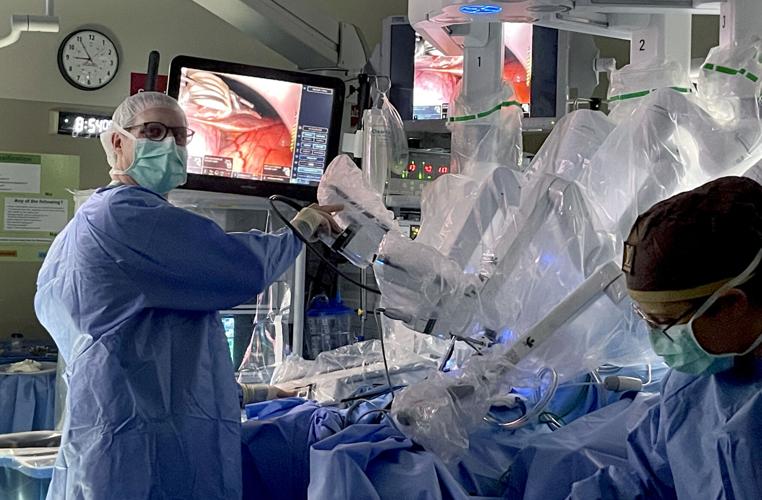08/24/23
Best of the West: The growth of carbon capture; a major investment in geothermal lithium extraction; the first robotic liver transplant; rebounding wheat harvests; electrifying Native communities

The Western Governors' Association keeps you updated on the latest news in the West. Here are the top stories for the week starting Aug 21, 2023. (Photos courtesy of. Adobe and UCHealth).
Just a few months ago, WGA compiled a Best of the West focused on recent advancements in carbon capture and storage technology, but with several large investments from the federal government, the industry is progressing so quickly that it’s time for another update.
Last week the U.S. Department of Energy (DOE) announced up to $1.2 billion in funding for two projects that directly remove carbon dioxide from the air – the largest investment in “engineered carbon removal” in history. Project Cypress will be built in Calcasieu Parish, Louisiana. South Texas DAC is planned for Kleberg County, Texas. Both claim the facilities will initially capture up to one million metric tons of carbon dioxide per year. A representative of the Texas project said it will scale up to remove 30 million metric tons per year once fully operational.
Following a funding announcement in May that awarded The Colorado School of Mines with $32 million from the DOE to study and develop a carbon sequestration hub in southern Colorado, Carbon Capture Inc. and a team of strategic partners announced that they have been selected to receive $12.5 million in DOE funding to initiate the development of a megaton-scale direct air capture hub in Southwest Wyoming.
The DOE also awarded nearly $20 million to carbon capture projects in Kern County, California as local officials aim to turn the southern San Joaquin Valley into a hub for the burgeoning industry.
The funding will help plan three projects near Taft – in the heart of California’s oil country. The lion’s share of the funding, about $12 million, will help design the California Direct Air Capture Hub, which is being developed by the California Resources Corporation – one of the state’s largest oil producers.
Another California-based company, Ebb Carbon, began operating its marine carbon dioxide removal system at its Sequim facility, which is run by the Department of Energy’s Pacific Northwest National Laboratory. Using electrochemistry to split saltwater into its acidic and alkaline parts, Ebb Carbon’s technology will return alkalinity to the ocean, creating chemical reactions that pull CO2 from the air and store it safely in the sea.
“We’re essentially accelerating a natural process,” Ben Tarbell, CEO and co-founder of Ebb Carbon, told Canary Media. “So instead of taking millions of years [to happen], it takes weeks to months.”
The potential for carbon capture and storage (CCS) to reduce the effects of emissions on the environment has enticed other industries to pursue CCS projects as well.
Research teams from Iowa State University and Wichita State University in Kansas are teaming up to develop a system that captures waste nitrogen and carbon dioxide to produce a green fertilizer that reduces emissions of nitrous oxide, a greenhouse gas 300 times more potent than carbon dioxide (CO2).
Copper Mountain Resort in Colorado launched a carbon sequestration plan to plant carbon-storing plants and grasses on its ski slopes. The resort has tapped researchers at Southwestern University in Texas in the effort, with student scientists staking out test plots on five ski runs where they can monitor vegetation growth using native seeds, compost, and biochar.
But while many speculate on the economic feasibility of these kinds of projects, many have proven to be extremely economical.
Washington’s latest auction of carbon-emission allowances raked in an estimated $62.5 million, with revenue from the state’s carbon-pricing program now nearing a billion dollars and far outpacing early estimates.
Seeing the success of Washington’s program, Governor Mike Dunleavy signed a new law to give the State of Alaska authority to develop carbon management projects on state lands, sell carbon offset credits, and lease state lands for carbon management purposes. The law will generate new revenue for the state, enable more active forest management, and ensure continued public access and use of state lands. “Our constitution requires us to develop, utilize, and conserve Alaska’s natural resources for the maximum benefit of the people," said Governor Mike Dunleavy. "This legislation allows us to do that in a new way and will generate new revenue for the state without taxing Alaskans or Alaskan businesses.”
Learn more about carbon capture and storage by engaging with Wyoming Governor Mark Gordon's WGA Chair initiative, Decarbonizing the West. You can also get involved and help WGA scope the initiative by filling out the Initative Survey, here.
Lithium Production: Stellantis, the maker of Chrysler, Dodge, Jeep, and Ram vehicles, hopes to introduce more than 25 all-electric vehicles by 2030, representing more than half of U.S. sales. To reach that goal, the multinational automotive manufacturing corporation is investing more than $100 million into a geothermal lithium project in California, which would increase the supply of lithium hydroxide monohydrate that Controlled Thermal Resources Holdings Inc. provides Stellantis for the production of electric-vehicle batteries.
 Robots to the Rescue: Surgeons at UCHealth University of Colorado Hospital's transplant center performed what is believed to be the first robotic liver transplant surgery on a living donor in the Rocky Mountain region. Using the advanced robot, which can magnify up to 10 times that of the human eye and see through tissue, results in a smaller incision, fewer scars, faster recovery, and less pain for the donor.
Robots to the Rescue: Surgeons at UCHealth University of Colorado Hospital's transplant center performed what is believed to be the first robotic liver transplant surgery on a living donor in the Rocky Mountain region. Using the advanced robot, which can magnify up to 10 times that of the human eye and see through tissue, results in a smaller incision, fewer scars, faster recovery, and less pain for the donor.
Rebounding Wheat Harvests: Following two years of abysmal wheat harvests, Montana’s average yield for 2023 is likely to flirt with 50 bushels per acre, enough to generate 79.2 million bushels, which amounts to 20 million more bushels of winter wheat than last year, the U.S. Department of Agriculture reported. The crop is a sharp turnaround from the 31 bushels per acre in 2021, a historic drought year in which a grasshopper infestation chewed much of what remained down to the root in Eastern and north central Montana. Last year wasn’t much better with a 33-bushel yield for the state as some of Montana’s best grain counties were still stuck in extreme drought.
Electrifying Native American Communities: The U.S. Interior Department unveiled a new program to bring electricity to more homes in Native American communities. In all, federal officials said $150 million is being invested from the Inflation Reduction Act to support the electrification of homes in tribal communities. In 2022, the U.S. Energy Department’s Office of Indian Energy issued a report citing that nearly 17,000 tribal homes were without electricity, with most being in southwestern states and Alaska. Assistant Secretary for Indian Affairs Bryan Newland testified before Congress earlier this year that 1 in 5 homes on the Navajo Nation and more than one-third of homes on the neighboring Hopi reservation are without electricity.